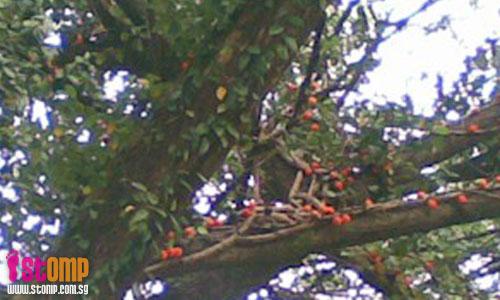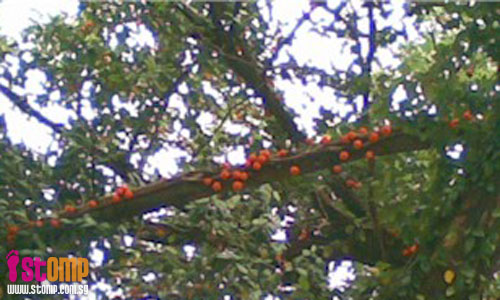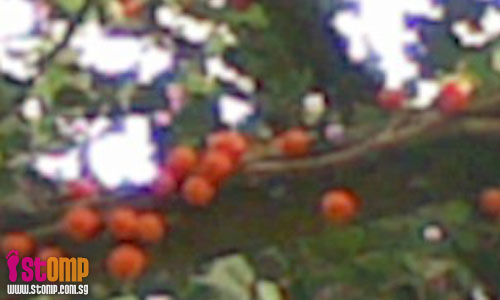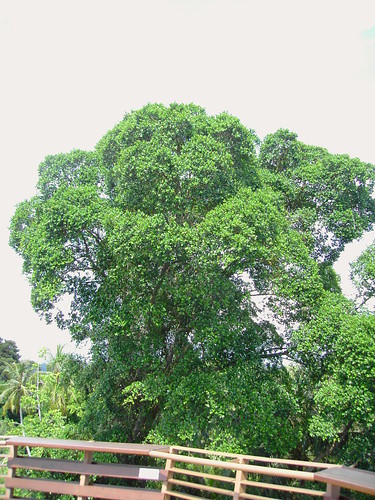
STOMPer Lim discovered this raintree's branches covered with ficus fruits and felt amused by this quirk of nature. Lim says:
"Accidentally discovered this raintree (Samanea saman) at College Road.
"Its branches are covered with lots of ficus fruits.
"From afar, the fruits look like Chinese New Year oranges!
"It is interesting to see such a quantity of ficus fruits growing on a raintree."


My initial guess was that this was one of those strangling figs, but then I remembered that some figs actually grow as climbers instead.
Based on my copy of A Guide to the Fabulous Figs of Singapore, the fig in question might be the orange fig Ficus aurantiacea. The entry for this species does mention that "two of its favourite wayside trees are Sea Apple (Syzigium grande) and Rain Tree (Samanea saman)".

Orange fig, Pulau Ubin
(Photo by she_guiwen)
It's amazing just how much diversity there is among the figs; FigWeb states that around 755 species are known for the genus Ficus, and they range in morphology from trees and shrubs to climbers and epiphytes.
Figs are keystone species in many tropical forest ecosystems, since a wide variety of animals depend on figs as a source of food, from birds to rodents, bats, civets and primates, to megafauna such as pigs and peccaries, tapir and even elephants.
In this case, there is probably little impact on the rain tree, apart from having to bear the extra weight. However, the same cannot be said of quite a few other fig species, which start out as epiphytes, but eventually turn into stranglers, overwhelming and encircling the host tree until it is killed, leaving behind a tangle of roots. The trees we call banyans actually also belong to the stranglers, and include species widely seen throughout Singapore. These include the Indian banyan (Ficus benghalensis), rubber fig (Ficus elastica), Burmese banyan (Ficus kurzii), and Malayan banyan or Jejawi (Ficus microcarpa).
Of course, how could I do a post on figs without at least mentioning a particular fig tree I've become quite familiar with?

This is the iconic Jejawi tree of Chek Jawa, taken from the top of the the Jejawi Tower.